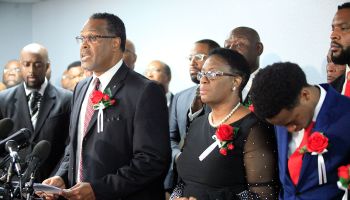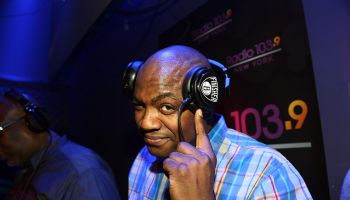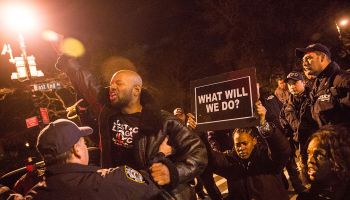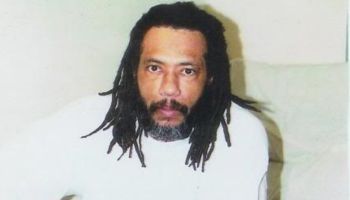Practicing religion was the secret ingredient, added to lifestyle changes, that helped a group of Black people reduce their high blood pressure, according to a new study published Tuesday in the scientific journal Circulation: Cardiovascular Quality and Outcomes.
See Also: Here’s How Important Religion Is To African-American Men
Researchers used volunteers who suffer from high blood pressure and also attend church to see how certain religious practices would affect their hypertension. Black folks, already by far the most religious group in America, have been disproportionately diagnosed with hypertension.
“For the first time, it’s been proven that a program can be developed to reduce blood pressure in a church-based setting, using lay people as facilitators, Dr. Gbenga Ogedegbe, the lead author of the study, told NewsOne. “Prior to this, most studied have used health professionals. The facilitators were church members who were not health professionals, with one or two exceptions.”
The study was based on data collected from 2010 to 2014, from 373 Black participants with hypertension who attend church in New York City.
Researchers divided the participants into two groups, with each receiving health education. Just one of the groups also received religious intervention, which included prayer, scripture reading and faith-based discussion related to health.
All the lay facilitators followed the same spiritual practice program that was designed by the researchers, Ogedegbe explained. That was necessary because they had to be able to control for differences in spiritual practices.
In a discussion on healthy diet, participants in the religious intervention group talked about Bible passage in the book of Daniel. Those scriptures focused on Daniel refusing to eat or drink anything unhealthy because the body is God’s temple.
After six months, those in the religious intervention group reduced their systolic blood pressure by 5.8 mm Hg (millimeters of mercury).
Blood pressure readings consist of two parts: systolic and diastolic. Systolic is the pressure created when the heart beats and diastolic is the pressure when it’s resting, according to the US Centers for Disease Control and Prevention. The CDC defines a healthy blood pressure reading as less than 120/80 mm Hg, with the first number systolic and the second diastolic.
African-Americans suffer hypertension at the highest rate in the world, according to the American Heart Association. More than 40 percent of non-Hispanic African-American men and women have high blood pressure. For African-Americans, high blood pressure also develops earlier in life and is usually more severe.
Ogedegbe, a professor of Population Health and Medicine in the Department of Population Health at NYU School of Medicine, was not surprised by the results. What did surprise him, though, was that the participants had an overall drop in blood pressure even though only about 50 percent of them completed all 11 sessions.
“There’s probably a sweet spot somewhere between four sessions and 11 sessions where blood pressure reductions came,” he stated. “Could you imagine if everybody completed all the sessions? There would have been a much higher overall reduction.”
Ogedegbe urged clergy and church leaders to pay attention to this study.
“Vulnerable populations often have lower access to primary care. We need to reduce racial disparities in hypertension-related outcomes between Blacks and whites,” he added.
Note: This article was revised to include comments to NewsOne from Dr. Gbenga Ogedegbe, the lead author of the study.
SEE ALSO:
Brett Kavanaugh’s First Supreme Court Cases Will Seriously Affect Black America
Policy That Terrorized Black People Expected To Be Supported By Trump And Kavanaugh

















